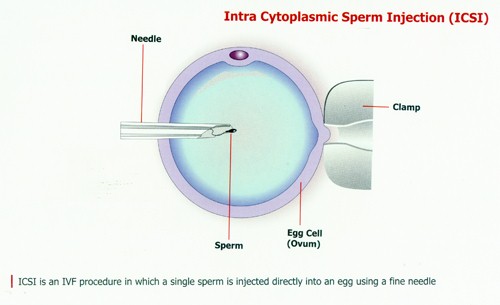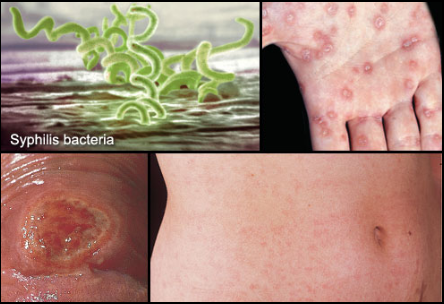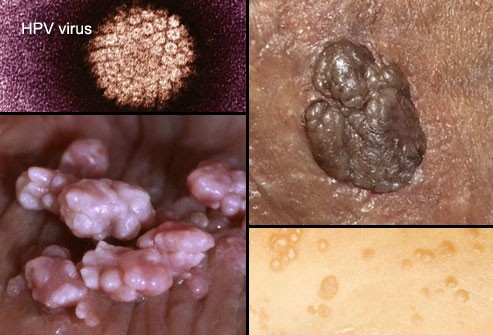Reproductive Health – Sexually Transmitted Diseases and Treating Infertility
Table of Content |
|
|
What is Infertility?
Infertility is the point at which a couple becomes unsuccessful to conceive following one year of sexual existence without contraception. 80% of all women coveting youngsters conceive inside 1 year of marriage and another 10% inside the second year.
As indicated by the World Health Organization, rate of infertility is around 10% around the world. Another 10-12% of the various couples have just a single child and wish to have more. The rate of infertility is slowly expanding everywhere throughout the world.
For some individuals experiencing infertility treatment, the level of trouble and strain can be high. Common trust and confidence in the specialist can help the couples to enquire about various modalities of treatment for both the male and in addition the female accomplice, and settle on educated choices of their reproductive status azoospermia (absolute nonappearance of sperm). In all the cases discussed below, sperm has been suctioned from the testicles specifically.
-
Intra-Uterine Insemination (IUI):
This technique is utilized as a part of men with respectably low sperm tally. The semen is gathered by masturbation, which is then washed and centrifuged to build the density of sperm. This high thickness sample of sperm is then infused into the uterus, bypassing the vagina. The odds of unfriendly cervical bodily fluid are subsequently dispensed with. Since the sperm is infused into the uterine cavity, odds of pregnancy are expanded. The method ought to be done inside 2 hours of gathering the semen.
-
Insemination with Husband's Semen (AIH)
This is done in instances of impervious cervical bodily fluid or when illness or deformation of the cervix makes it unimaginable for the sperm to enter the uterus. It is likewise done in instances of untimely discharge or impotence.
-
Insemination with Donor Semen (AID)
AID is normally completed in couples where the male experiences azoospermia.
In Vitro Fertilization (IVF)
It is the technique by which egg cells are dealt with by sperm (regularly 100,000 sperm/ml) outside the womb, in vitro. IVF is a vital treatment in infertility when distinctive procedures for helped reproductive advancement have failed. The methodology incorporates hormonally controlling the ovulatory technique, emptying ova (eggs) from the woman's ovaries and allowing sperm to treat them in a fluid medium. The treated egg (zygote) is then transferred to the patient's uterus with the objective to develop a productive pregnancy. The principal compelling birth of an "test tube baby", Louise Brown, took place in 1978. Going before that, there was a transient biochemical pregnancy reported by Australian Foxton School researchers in 1973 then an ectopic pregnancy which was accounted for by Steptoe and Edwards in 1976.
In vitro, (Latin) which implies inside the glass, regular examinations including advancement of tissues outside the living animal were done utilizing glass holders, for instance, measuring utensils, test tubes, or Petri dishes. Term in vitro used to imply any normal procedure that is performed outside the animal. In vivo technique, tissue remains inside the living structure, inside which it is usually found. An ordinary term for kids considered as the delayed consequence of IVF seems to be, unnaturally imagined youngsters; nevertheless, in vitro readiness is all the more regularly performed in shallow holders called Petri dishes (made of glass or plastic saps).
Zygote Intrafallopian Transfer (ZIFT)
This is a type of infertility treatment where blockage in the fallopian tubes keeps the typical fusion of sperm to the egg. Egg cells are expelled from woman's ovaries, and then fertilized in vitro. The resultant zygote is then put into the fallopian tube by laparoscopic technique. ZIFT has a win rate of 64.8% in all cases.
It takes a normal of five weeks to finish a cycle of ZIFT . To begin with, the woman must take medicines to increase fertility and to fortify egg creation in the ovaries. The specialist will screen the development of ovarian follicles, once the follicles are mature, woman will be infused with Human Chorionic Gonadotropin (hCG). Eggs will be reaped roughly 36 hours after the fact, typically by transvaginal ovum recovery. After fertilization in research center zygotes are set into the woman's fallopian tubes utilizing laparoscope.
Gamete Intrafallopian Transfer (GIFT)
GIFT Procedure
GIFT is another assisted reproductive technique that works against infertility. Eggs expelled from a woman's ovaries are placed in one of the Fallopian tubes, alongside the man's sperm. The system, which was spearheaded by endocrinologist Ricardo Asch, permits fertilization to occur inside the woman's body. It takes a normal of four to six weeks to finish a cycle of GIFT. In the first place, the woman must take a fertility medication to animate egg creation in the ovaries. The specialist will screen development of ovarian follicles, once they develop, woman will be infused with Human Chorionic Gonadotropin (hCG). The eggs will be gathered roughly 36 hours after the fact, blended with the man's sperm, and put once again into the woman's Fallopian tubes utilizing laparoscope
Intracytoplasmic Sperm Injection (ICSI)
It is a strategy in which only one sperm is infused into the focal point of the egg, keeping in mind the end goal to accomplish treatment. Sperm is gathered from the male accomplice by masturbation. Single healthy sperm is then infused into the ovum that is prepared already. The upside of this technique is that only a solitary sperm is required - even men with a low sperm number can get to be fathers with this treatment.
Men observed to be azoospermic that is with no sperm count at all in the semen, sperm can be suctioned out of the vas deferens (male tubes). Sperm can likewise be freed from the testicles itself via cautious testicular biopsy and culture by a strategy called MESA Microepididymal sperm aspiration.
Male Infertility Prevention
Undescended testicles ought to be dealt with at the soonest during the infant stage before testicular capacity is harmed. Contaminations by mumps and different infections ought to be overseen by watching out for complexities in the testicles.
Sexually Transmitted Diseases (STDs)
These are infections or diseases transmitted to healthy females or males because of sex with contaminated people.
The sexually transmitted diseases are also called Reproductive Tract Infections (RTI) or Venereal Diseases (VD).
Most basic STDs are gonorrhea, syphilis, genital herpes, Chlamydiasis, genital warts, trichomoniasis, Hepatitis-B and AIDs. With the exception of HIV infections, hepatitis B and genital herpes, different STDs are totally treatable if distinguished early and treated legitimately. Infections like Hepatitis-B and HIV are transmitted sexually as well as by sharing of infusion needles to tainted people, blood transfusion or from contaminated mother to baby.
Side Effects of Sexually Transmitted Diseases:
Men
• Swelling or delicacy in genital region.
• Blisters, wounds or knocks around the mouth or genitals.
• Fever, chills and pains.
• Unusual tingling.
• Burning sensation when you move your bowels or pass urine.
• Yellow, watery, or white discharge from the penis.
Women
• Have fewer manifestations than men, regularly none by any stretch of the imagination. Sexually transmitted diseases can prompt to cancer. Women ought to look for.
• Bleeding that is not a portion of their period.
• Pelvic or vaginal torment.
• Discharge from the vagina.
• Urination that is painful.
• Unusual rash, sore or development in the genital territory.
Counteractive Action
Under the conceptive medicinal services programs, anticipation, early recognition and cure of STDs are given importance. In spite of the fact that all people are prone to these infections, their rates are accounted for to be high among people in the age gathering of 15 to 24 years.
Sexually transmitted diseases can be avoided by following precautions:
1. Sex ought to be kept away with obscure accomplices or numerous accomplices.
2. Amid sex, condoms ought to be utilized.
3. In the event of uncertainty, one ought to go to a qualified specialist for early discovery and appropriate treatment.
Sorts of Sexually Transmitted Diseases (STDs)
1. Bacterial STDs
The accompanying three types are general:
(i) Syphilis
The causative pathogen is Treponema Pallidum. The primary phase of the disease has indications like infections and ulcers that are painless on the privates, swelling of lymph organs. In the second stage there are skin injuries, rashes, male pattern baldness, swollen joints and so forth. In the later stage, perpetual ulcers show up on sense of taste, nose or lower leg.
Syphilis
There can be loss of motion, cerebrum harm, visual impairment, heart inconvenience and so on. The hatching time frame is 10 to 90 days. The disease is reparable through suitable anti-infection agents like penicillin and tetracycline.
(ii) Gonorrhea
The causative pathogen is Neisseria gonorrhea. The microscopic organisms live in genital tubes and delivers discharge containing discharge torment around genitalia and copying sensation amid pee. Brooding period is 2 to 5 days. It can be treated with proper anti-infection agents like penicillin and ampicillin.
(iii) Chancroid
Chancroid
The causative bacterium is Haemophilus ducreyi. In this infection ulcer shows up over the outer genitalia which is agonizing and seeping with swelling of close-by lymph hubs. It can be treated with anti-infection agents.
2. Viral STDs
(i) AIDS
The causative infection is Human Immunodeficiency Virus (HIV). The indications of AIDS are preceded with fever, torpidity, weight reduction, nausea, migraine, rashes, pharyngitis and so on. Because of loss of invulnerability, the body can't secure itself against an infection. The disease can be analyzed by Western Blotting and ELISA tests. The brooding time frame is 6 months to 10 years. In this way, there is no cure; however certain medications can drag out the life of AIDS patients which are Zidovudine or Azidothymidine (AZT), Didanosine and so on.
(ii) Hepatitis B
The causative infection is Hepatitis B Virus (HBV). The side effects of the disease are weariness, jaundice, determined low fever, rash and stomach torment. At a later stage there is liver cirrhosis and potentially liver disease, it can be analyzed by Australian antigen test and ELISA. The brooding time frame is'30-80 days, it is hopeless. Hepatitis C and Hepatitis D are additionally STDs.
(iii) Genital Herpes
The causative infection is Herpes simplex infection. In this disease there are vesiculopustular injuries took after by groups of difficult erythematous ulcers over outside genitalia and perianal districts. Side effects are more extreme in females. There is fever, migraine, torment, and tingling, vaginal and urethral discharge with swelling of lymph hubs. It is likewise a hopeless STD.
Herpes Simplex Virus Type I
Herpes Simplex Virus Type II
(iv) Genital Warts
The causative infection is Human Papilloma Infection (HPV). These are hard outgrowths creating on the external surface of outer genitalia and perianal region. In females, infection may enter vagina and cervix. It spreads through sex with bearers of this infection. Cryosurgery is utilized for expulsion of the warts.
3. Sexually Transmitted Diseases Brought About by Chlamydiae
Chlamydiae are classes of bacteria whose individuals are commit intracellular pathogens. The accompanying STDs are brought about by chlamydiae.
(i) Chlamydiasis
The causative microscopic organisms are chlamydia trachomatis. This is a human pathogen that causes trachoma, sexually transmitted and perinatal infection. It causes cervicitis, inflammation of fallopian tubes,urethritis epididymitis, proctitis.
The disease is transmitted by sexual contact with infected sexual partner. The bring forth time span is around one week. Anti-infection agents like anti-microbial drug, erythromycin and rifampicin are convincing medications.
(ii) Lymphogranuloma Venereum
The causative bacterium is chlamydia trachomantis of L1, L2, L3 serotype. It is a sexually transmitted contamination commonly of warm air. The disease involves a fundamental cutaneous or mucosal genital damage, urithritis or endocervicitis. Locally harmful ulcerations, genital elephantiasis, and rectal structures moreover happen.
4. Protozoan STDs
The causative protozoan is Trichomonas vaginalis. The parasite taints both guys and females. In females it causes vaginitis with foul scent, yellow vaginal discharge and copying sensation. In guys it causes urethritis, epididymitis and prostatitis bringing about agony and blazing sensation. The disease is transmitted through sex. The disease is treated with metronidazole.
5. Fungal STDs.
Candidiasis
The causative organism is vaginal yeast, Candida albicans. The pathogen is found in mouth, colon and vagina. In the event that there ought to be an event of vaginal contamination, the women experience anguishing disturbance with thick soft release. Folks may make troublesome bothering of urethra through sexual contact with spoiled woman. Anti- infectious agents include clotrimazole, nystatin and miconazole can cure the disease.
Pelvic Inflammatory Disease
Pelvic Inflammatory Disease (PID) is infection of a woman's regenerative organs. Infection spreads upward from the cervix to the uterus, Fallopian tubes, ovaries, and encompassing structures.
Pelvic Inflammatory Disease (PID) Symptoms
On the off chance that a woman has PID, she may have any of these indications:
-
Abdominal agony (particularly bring down stomach torment) or delicacy
-
Back pain
-
Unusual or substantial vaginal discharge
-
Painful urination
-
Painful sex
-
Symptoms not identified with the female conceptive organs incorporate fever, queasiness, and regurgitating. PID manifestations might be more terrible toward the end of a menstrual period and amid the initial a few days taking after a period.
Ectopic Pregnancy Overview
Ectopic Pregnancy is the type of pregnancy that creates outside a woman's uterus womb). When the treated egg from ovary does not embed itself regularly in the uterus, egg grows elsewhere in the mid-region. Such originations are strange and can't form into an embryo.
-
Common ectopic pregnancy in fallopian tubes (alleged tubal pregnancy). Likewise found on the outside of the uterus, on the ovaries, or connected to the entrail.
-
Complication of ectopic pregnancy is intra-stomach drain (serious dying). Eg. tubal pregnancy the results of origination keeps on developing in the fallopian tube, tube grows and inevitably bursts. This can be extremely risky in light of the fact that a substantial supply route keeps running on the outside of each fallopian tube. In the event that the conduit cracks, you can drain seriously.
-
Ectopic pregnancy generally found in the initial five to ten weeks of pregnancy.
Infertility in Human: Causes & Consequences:
In Males |
In Females |
|
Oligospermia: |
Anovulation: |
|
Azospermia: |
Oligoovulation: |
|
Hyperprolactinemia: |
|
|
Teratozoospermia: |
Idiopathic Infertility: |
|
Cryptorchidism: |
Tubal Infertility: |
Frequently Asked Questions (FAQs)
Q1. Can STD cause infertility?
Sol. Chlamydia and gonorrhea are imperative preventable causes of Pelvic Inflammatory Disease (PID) and infertility. Untreated, about 10-15% of women with chlamydia will develop PID. Chlamydia can likewise bring about fallopian tube infection with no side effects.
Q2. Can STD prevent a woman from getting pregnant?
Sol. However, a lesser known certainty is that Sexually Transmitted Diseases (STDs), additionally called Sexually Transmitted Infections (STIs), can likewise bring about infertility issues that forestall pregnancy. Every year, more women discover that they can't get pregnant in light of a STD
.
Q3. Can you get pregnant if you have STD?
Sol. BV, or bacterial vaginosis, does not bring about issues with getting pregnant; be that as it may, having had gonorrhea and chlamydia in your past can at times prompt to scarring in your fallopian tubes on the off chance that you created pelvic inflammatory disease identified with these STDs.
Watch this Video for more reference
View courses by askIITians


Design classes One-on-One in your own way with Top IITians/Medical Professionals
Click Here Know More

Complete Self Study Package designed by Industry Leading Experts
Click Here Know More

Live 1-1 coding classes to unleash the Creator in your Child
Click Here Know More

a Complete All-in-One Study package Fully Loaded inside a Tablet!
Click Here Know MoreAsk a Doubt
Get your questions answered by the expert for free

















